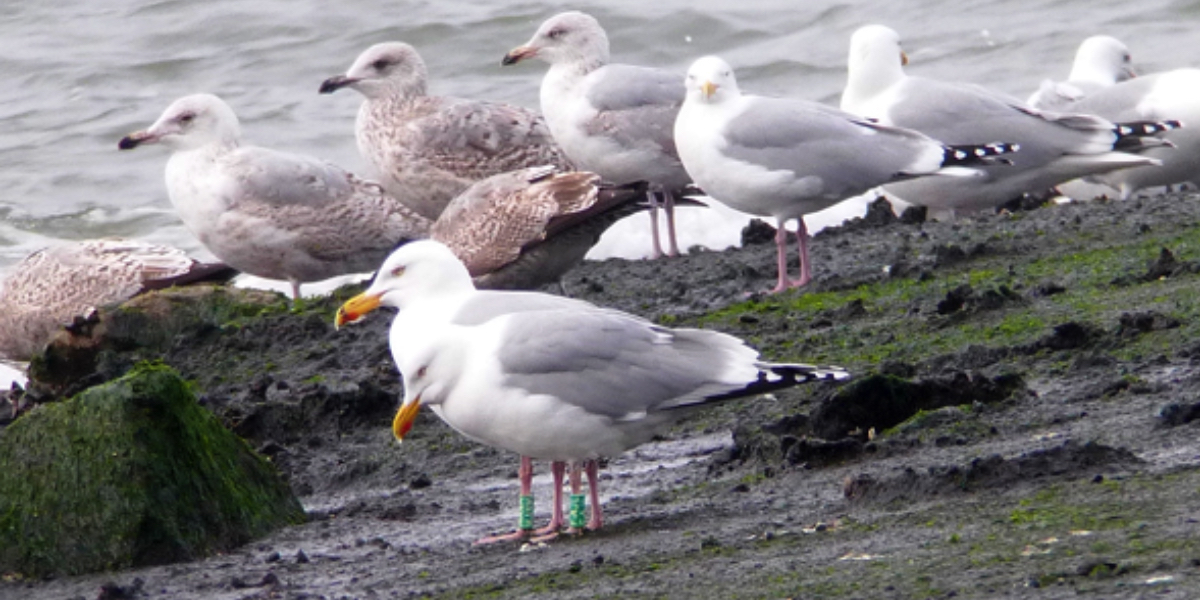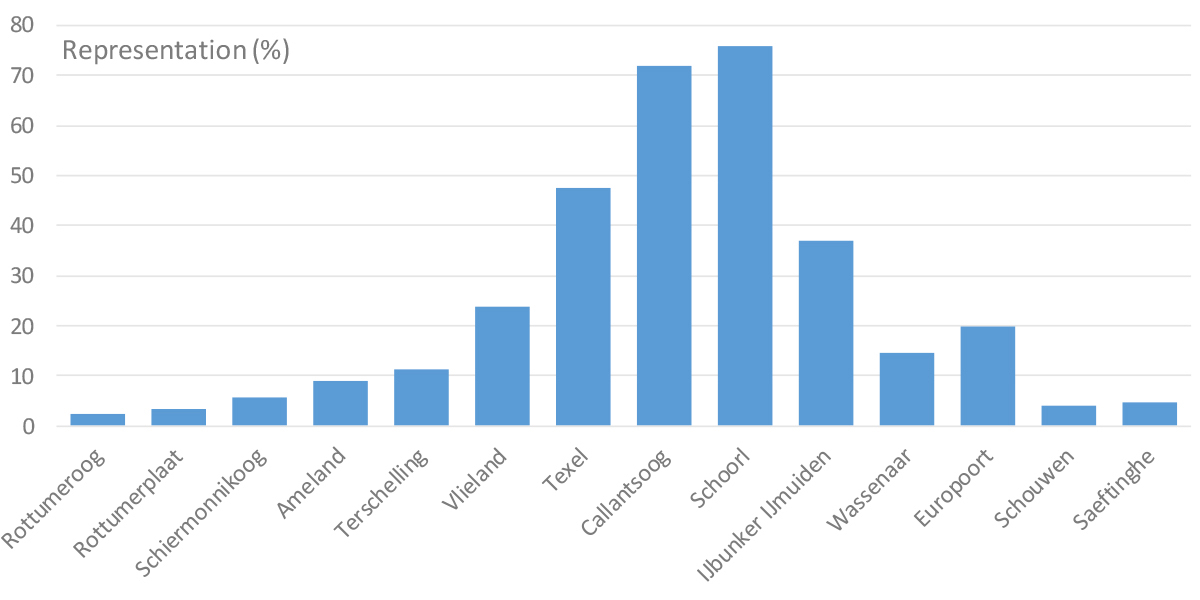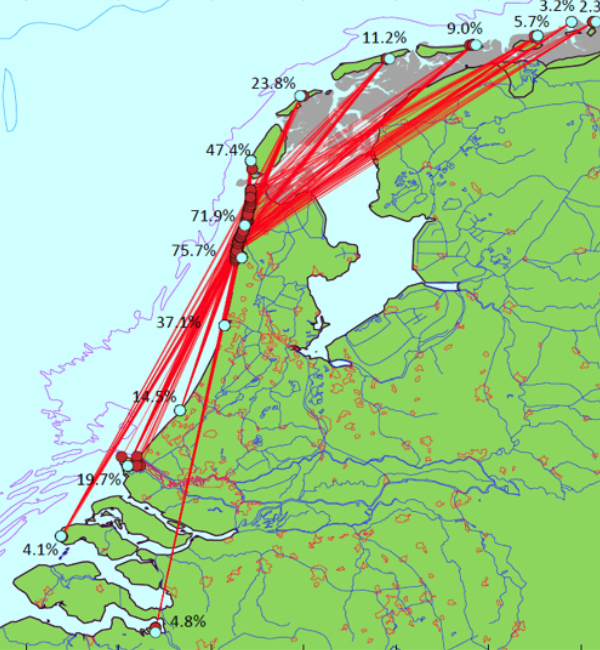Groynes are a major attraction for gulls
Re-sightings of individually marked, colour ringed birds showed that there was this one, major attraction straight after breeding, for gulls from all colonies, throughout the country: the breakwaters, or groynes, along the coast between Schoorl (North-Holland) and De Koog (Texel). What’s so special in that area?

Save havens for roosting birds
The 169 individual groynes, on average some 230m apart and each sticking ~30-40m into the North Sea, form safe havens for roosting birds when exposed during low tide and are predictable feeding grounds (providing mussels that are attached to the rocks) at the same time. Where else can you have that?
Tourists tend to find the groynes to slippery, most dogs stay close to their owners, so the gulls have rest and something to eat. They rest, feed… and moult all their body feathers, wings included, so that they tend to look very shabby in the process. Some gulls visit many groynes, others are more site faithful. Some birds bring their partner (see photo), others have their activities more separated. The birds return to the groynes every low tide, and sit further inland when the water is high.
Representation (%)

They rest, feed… and moult all their body feathers, wings included
